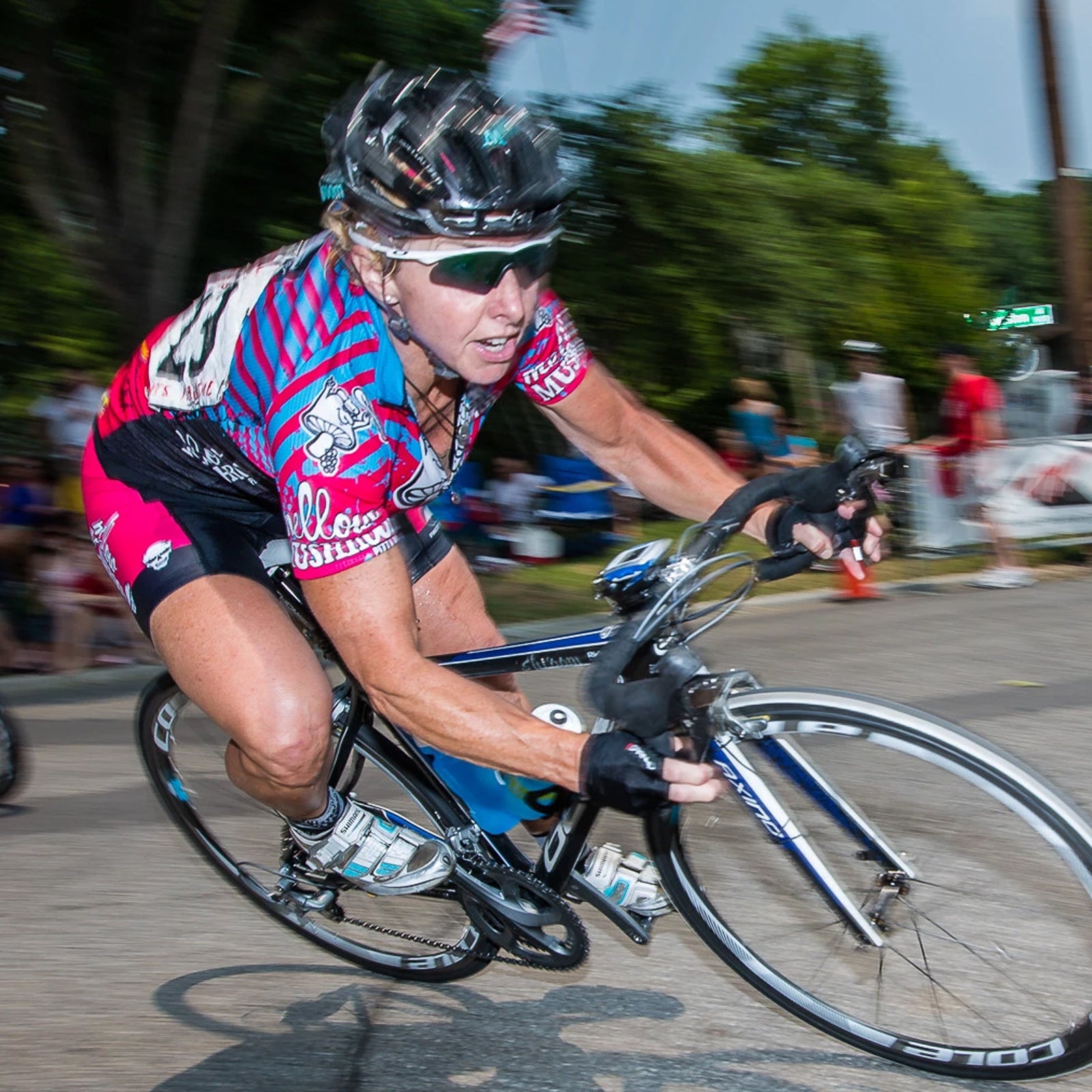didnÔÇÖt know what she was getting into when she bought her first mountain bike 30 years ago. Fresh out of college, she was working in her familyÔÇÖs restaurant and just wanted to get fit╠řand╠řmaybe raise some money for charity. She started riding the roads around her Pennsylvania hometown. A few months later, she signed up for a charity ride for multiple-sclerosis research to honor her mother. She loved it. She tried a local mountain-bike race and was hooked.
Three decades later, Van Gilder is now the winningest American woman╠řin professional cycling╠řand has dominated╠řa variety of disciplines. ÔÇťI tried everything at first: road, time trials, track, mountain biking,ÔÇŁ Van Gilder says. ÔÇťI did 75 races a season and worked full-time at the restaurant for the first few years of my career.ÔÇŁ╠řIn 2000, Van Gilder won╠řthe womenÔÇÖs U.S. criterium championship,╠řand throughout her mid-forties, she╠řwas the top-ranked woman on the Union Cycliste╠řInternationale╠ř(UCI) world cyclocross standings. All told,╠řVan Gilder has more than 350 victories to her name.
For most of her time as a cyclist, Van Gilder raced as an independent, turning╠řdown multiple offers to join high-profile professional teamsÔÇöand the salary, logistical support, and training that comes with them. Van Gilder says it made more sense for her to tackle the peloton alone. She liked having complete control over her training and race schedule and thinks it helped her avoid burnout. ÔÇťI joined a big team during one season, and I was so unhappy,ÔÇŁ she╠řsays. ÔÇťBut it made me realize that I just love riding my bike. Period. I didnÔÇÖt want it to feel like a job, and thatÔÇÖs what racing for a big team felt like.ÔÇŁ
But in 2009, Van Gilder found ,╠řan Atlanta-based team that she says╠řstill gives╠řher the autonomy she craves while providing╠řa certain amount of logistical support. She was╠řdrawn to╠řthe groupÔÇÖs comradery, which she says feels more like a big family than a race team. Van Gilder╠řalso discovered cyclocross╠řthat same year and instantly became a powerhouse in the╠řniche discipline.╠řShe now divides her year between criterium races in the spring and summer and cyclocross races in the fall and winter. Unlike many professional cyclists, for Van Gilder, there is no off-season. Still, she says the two styles are complementary and feed off each other. Cyclocross requires╠řbikers to race laps on short dirt courses full of mud, hills, singletrack, and stairs, while criteriums see them peddling╠řaround╠řroad courses closed to traffic.╠řÔÇťTheyÔÇÖre both short and explosive,ÔÇŁ Van Gilder says. ÔÇťYouÔÇÖre racing for an hour, really hard, in both disciplines. I usually come into the spring road season pretty tired, but I love both so much, I canÔÇÖt pick just one.ÔÇŁ
ÔÇťI donÔÇÖt look at myself as a fifty-something-year-old athlete,ÔÇŁ she says. ÔÇťMentally, at the start line, IÔÇÖm very much the same as the 17-year-old IÔÇÖm racing next to.ÔÇŁ
Van Gilder also takes an unorthodox approach to her training: She doesnÔÇÖt have a coach and doesnÔÇÖt even follow╠řa set plan. She doesnÔÇÖt hit the gym,╠řand she doesnÔÇÖt run╠řor cross-train. She simply rides her bike. ÔÇťI donÔÇÖt use a heart-rate monitor or power meter, I donÔÇÖt do intervals,ÔÇŁ Van Gilder says. ÔÇťI ride about five times during the week and let the terrain and riding partners dictate the effort. And then I race every weekend.ÔÇŁ
That lack of structure is atypical╠řfor professional cyclists, who generally╠řfollow a strict training regimen.╠řBut Van Gilder says it helps her keep cycling enjoyable. She╠řdiscovered that when sheÔÇÖs happy, she wins. And after almost three decades of racing professionally, her approach still works. At 55 years old,╠řVan Gilder dominates╠řboth cyclocross╠řand criterium╠řevents:╠řshe won back-to-back cyclocross national championships and 2018╠řand the Masters Cyclo-Cross╠řWorld Championships in her age group last year.╠řSheÔÇÖs also still╠řcompetitive in a field of pros half her ageÔÇöin May, she took second place behind 20-year-old , a former national track-cyclist champion and one-time overall winner of the U.S. Criterium Series. ÔÇťI donÔÇÖt look at myself as a fifty-something-year-old athlete,ÔÇŁ she says. ÔÇťMentally, at the start line, IÔÇÖm very much the same as the 17-year-old IÔÇÖm racing next to, and I want to accomplish the same thing that person does.ÔÇŁ
Even though Van Gilder is aware of╠řher limitsÔÇösheÔÇÖs added more rest into her training╠řand can tell she doesnÔÇÖt recover as quickly as she used toÔÇöshe╠řhas no plans to slow down any time soon.╠řSheÔÇÖs racing every weekend, and╠řif all goes well, sheÔÇÖs looking forward to competing in the again this year.╠řNext year will probably bring more of the same. ÔÇťIn the winter, when itÔÇÖs dark and cold and IÔÇÖm training alone, I wonder if itÔÇÖs time to find something else,ÔÇŁ Van Gilder says. ÔÇťBut then spring rolls around, and I love it again. ItÔÇÖs such a big part of my life, I donÔÇÖt know how IÔÇÖd replace it. I canÔÇÖt imagine a day when IÔÇÖm not pedaling my bike somewhere.ÔÇŁ


